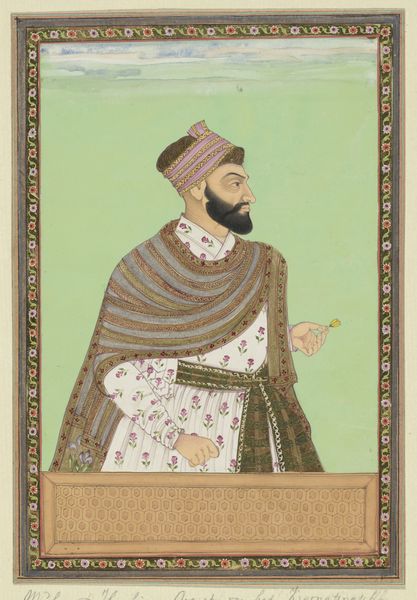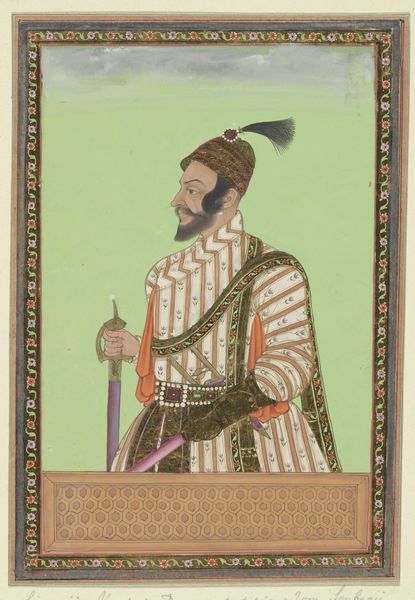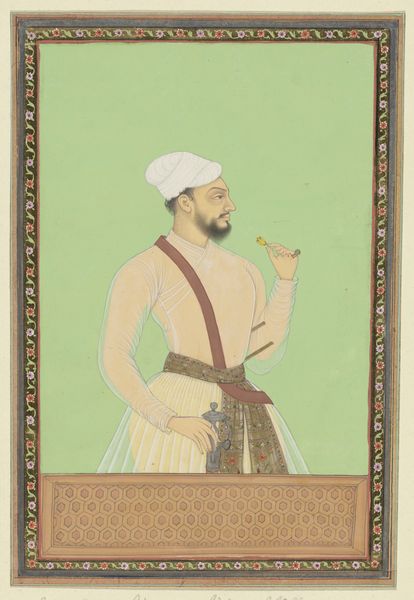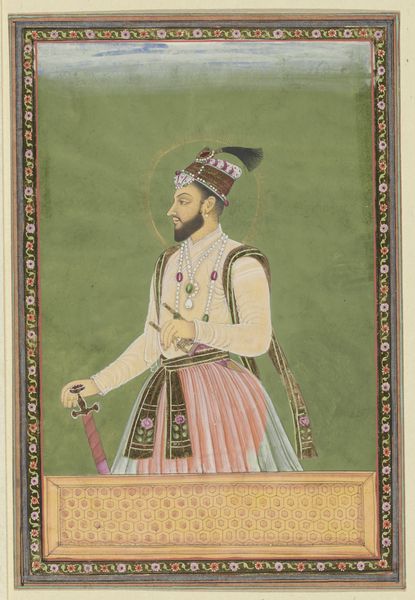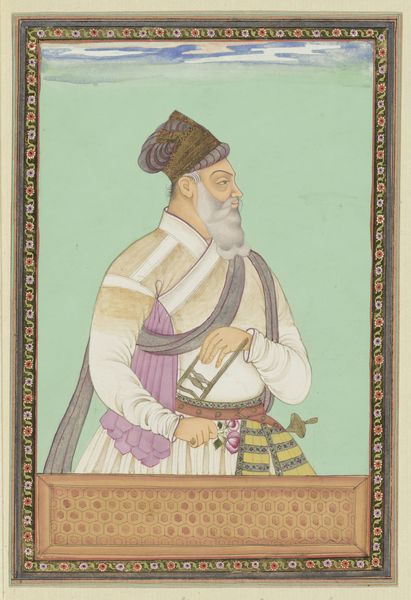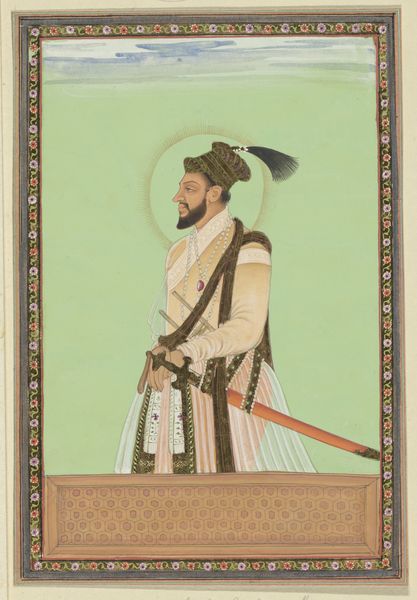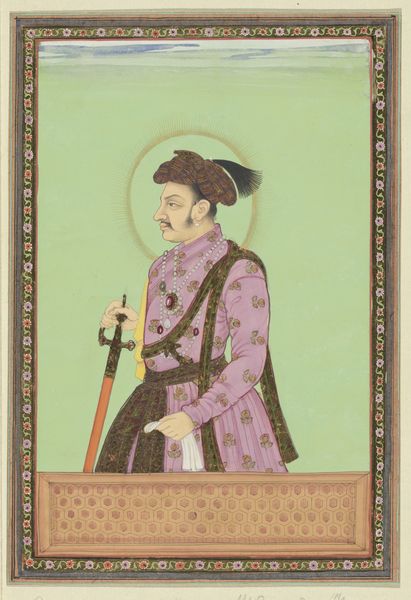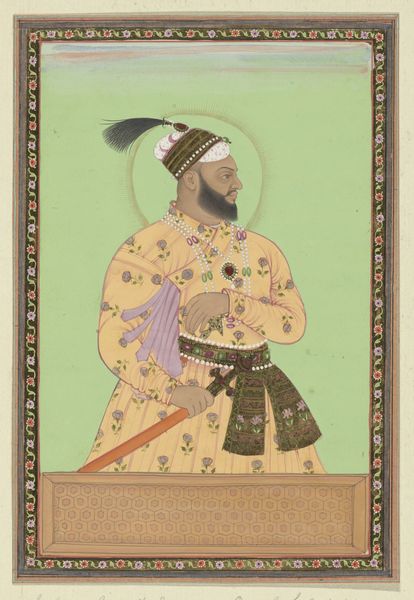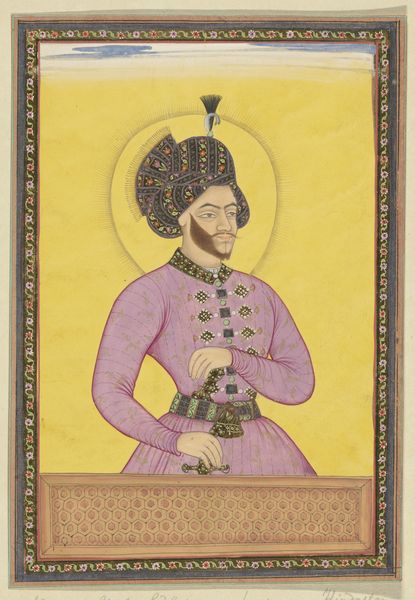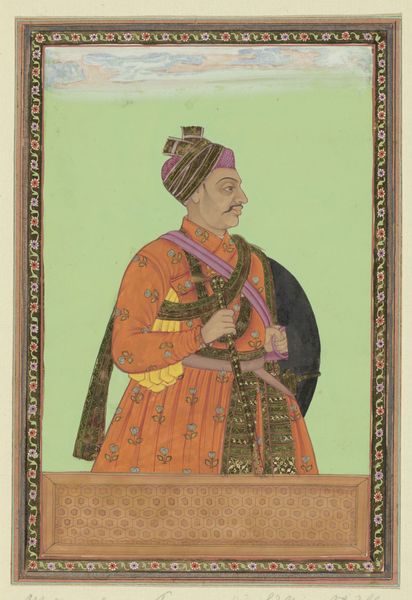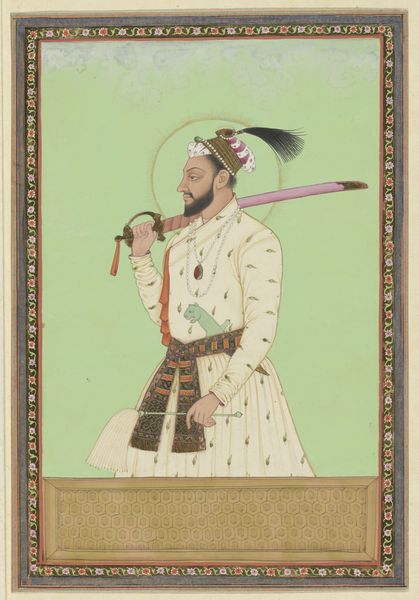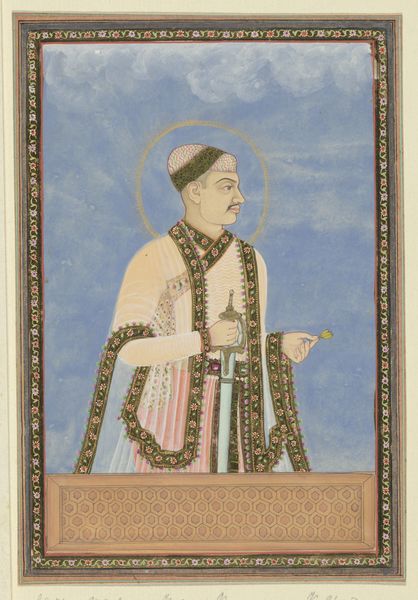
Portret van Humayun Padshah, de zoon van Babur, die na zijn vader in Hindustan heeft geregeerd c. 1686
0:00
0:00
painting, watercolor
#
portrait
#
water colours
#
painting
#
asian-art
#
figuration
#
watercolor
#
geometric
#
islamic-art
#
history-painting
#
miniature
Dimensions: height 203 mm, width 140 mm
Copyright: Rijks Museum: Open Domain
Curator: Allow me to introduce this 17th-century Mughal portrait, likely from around 1686, housed here at the Rijksmuseum. The title translates to "Portrait of Humayun Padshah, the son of Babur, who ruled in Hindustan after his father." Editor: My first thought? Exquisite control. I’m immediately drawn to this figure—there’s a sense of poised stillness, despite the incredible detail of the patterning. And what’s with that intense chartreuse backdrop? Curator: Well, that color may appear striking to our contemporary eyes. These portraits were embedded within broader political and social contexts, functioning, in part, to solidify power through visual representation, through clothing and wealth... and to illustrate dynastic legacy through visual symbolism. Editor: Hmmm, yes, legacy...but this almost feels like he’s suspended—caught between worlds, what with that rather severe architectural ledge right at his hip and that bright field around him. I mean, the piece teeters between presence and absence. Look how he presents the blossom... delicately, cautiously. It almost reads like a question. Curator: The caution makes sense within his historical framework. Humayun's reign, inheriting power after his father Babur, wasn't seamless, which certainly contextualizes that... uncertainty, for lack of a better word. Looking at him through the lens of power struggles, colonial impact, and courtly machinations opens interesting interpretative paths. Editor: Absolutely! It almost makes one want to liberate him from the two-dimensional page. Watercolor can trick the eye like that, too; look how it allows for such incredible fineness of line—those tiny florets on his tunic are almost too delicate to bear. There's a yearning for detail—to catalogue and fix a legacy as fact, like capturing a memory before it dissolves. Curator: That interplay of preservation and dissolution really speaks to Mughal painting traditions. Their hybridity--cultural intermingling with Persianate aesthetics for instance-- makes it all more interesting, even poignant, when considering the instability of the kingdom during his rule. Editor: Poignant, yes... And so much labor to capture that precarious moment. I get a sense of both great ambition and a fragile heart from this portrait. The kind of portraiture that invites projection. I am left musing not so much about who he was, but the human experience of power. Curator: Precisely. His place within a complex historical narrative asks viewers to look beyond simplistic portraiture to confront colonialism, religion, and identity formation and representation in Mughal India. Editor: Thanks, fascinating to think about. Now if you'll excuse me, I feel the urge to go find something to paint. Perhaps some miniature roses in honor of his gorgeous floral garb.
Comments
No comments
Be the first to comment and join the conversation on the ultimate creative platform.

